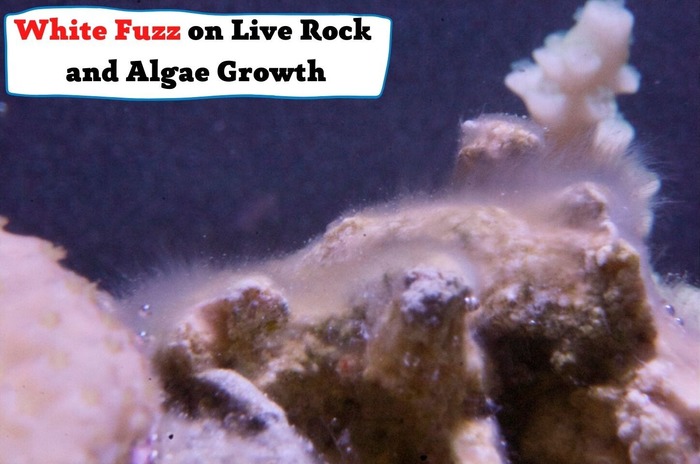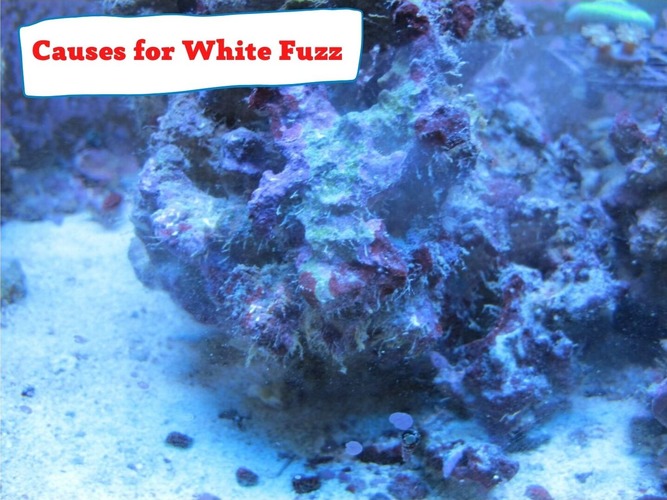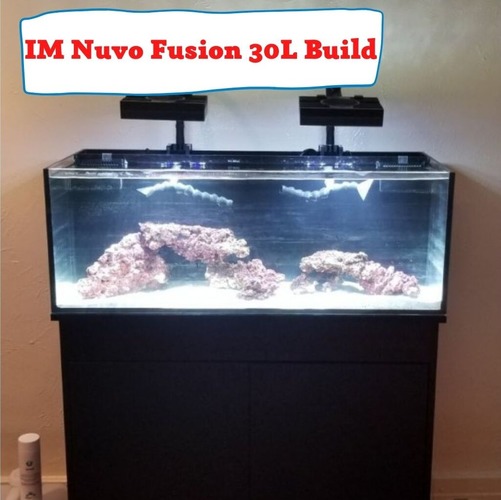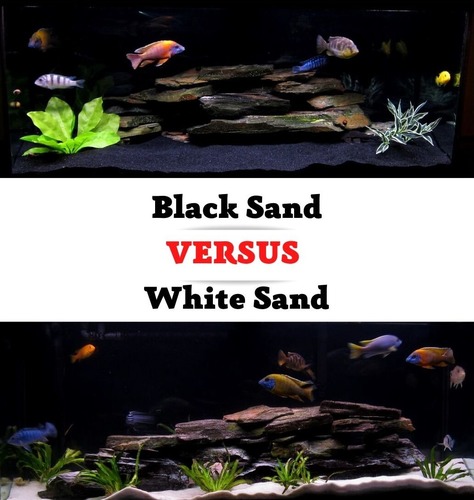
Many aquarium holders commonly claim to have seen the plants and live rocks inside their fish tanks harbor whiteness on its surface.
There are questions about what has caused this whiteness. Fish tank owners want to know what it means for the well-being of the tank, the live rock, the algae growth, and the species living inside.
Holding an aquarium has never been easy. Especially considering how fragile its ecosystem can be. In such cases, taking special precautions by monitoring your aquarium and catering information can help indicate any evident signs of danger before the problem escalates.
For this reason, this article answers some questions as it thoroughly explains the causes, impact, and possible solutions to this white fuzz situation.
What is live rock?
Seeing the live rock inside your tank turn white appears somewhat unexpected, but it is more common than you may think.
Live rocks are components made from the calcium carbonate remnants of coral organisms.
They’re pieces of coral reefs, broken in the wake of natural disasters such as storms. The iodine in the rock gives the live rock the coloring, whereas calcium delivers its structure.
Purpose of Live Rock
- Shelter for the Organisms
Live rocks aren’t alive. They are named ‘live’ because several living creatures such as worms, crabs, bacteria, and others find shelter within their surface.
- Filter System
Live rocks are also why keeping saltwater aquariums inside your homes is achievable.
This is because live rocks can act as a natural filter system for your aquarium. They have a porous nature, making them optimal for aerobic and anaerobic bacterial growth. This is good because bacteria, where not in excess, inherently work as a source to manage the waste inside the tank.
For this to be effective, the number of live rocks inside should be sufficient, and it should match with the gallons of fish and reef set up within the tank.
- Appearance
Live rocks can enhance the appearance and attractiveness of the fish tank. They can be the source of colorful algae growth. At the same time, the rocks can add variety by being in different shapes and sizes.
This assortment brings variety into the visuals of the tank, making it seem more natural-looking and similar to the ocean than it would have been possible otherwise.
White Fuzz on live rocks
If you’ve seen the white fuzz inside your aquariums, you must have noticed its moldy, cotton-like appearance.
This white fuzz could indicate fungus or bacterial growth within the tank. When the latter settles inside, these parasites take this white fuzz form over the rocks and plants within the aquarium.
How to identify it?

However, not all white changes on your live rock or your aquarium are bacterial or fungal growth.
- Color Erosion
Sometimes, the color of the live rock erodes. This erosion can result from a lack of nutrient supplementation inside the tank. Nutrients that can cause this change can be iodine or calcium, as these two elements give the coral structures their color.
Lack of lighting inside the tank can also cause the live rock to turn white. More light is needed in the tank where live rocks are present, especially as the organisms living inside depend on it for their growth.
Live rocks manage the level of nitrates present in the tank. However, high nitrates level could also change the color of the live rocks to white.
- Mulm
Mulms are decomposed leftovers that cover the objects inside the aquarium, like dust. If unattended, this dust can block the filters, the sunlight while increasing the concentration of ammonia to rise in the tank.
- White Mold
White fuzz has more of an appearance of cotton buds. It spreads and grows rapidly inside the tank, rocks, fish, and weaves like a cloud. They are usually found in decorations, are hard to scrub off, and are translucent in nature.
- Worms
White, brownish stuff that moves? There is a possibility that the white substance inside your tank is a worm. Detritus worms are not carnivorous, unlike planaria worms. Therefore, they are not a big cause of concern unless found in huge numbers.
Planaria worms, however, may attack your fish when weakened. If the worms inside your tank are planaria worms, the fish eggs inside will need safety.
These indications of whiteness spreading in your aquarium and what they are can only be pointed out by effective monitoring. Such as by finding your tank cloudy from the inside or with a mold-like layer coating its surface.
Each issue has a different cause and treatment. It should, therefore, not be confused with one another.
Causes for White Fuzz

There are many possible reasons why white fuzz has started appearing on your live rock or inside your fish tank.
A few reasons among them can be:
- Overfeeding, or too little feed
Overfeeding can lead to too much waste accumulating inside the tank, leading to excessive fungus, bacteria, and algae growth. Where lack of food is given, the fish excretes a white mucus-like substance from inside. This fecal cast is commonly referred to as white stringy poop.
- Temperature
At times the water condition inside the tank is not optimal. The temperature goes beyond the required threshold, sustaining bacterial growth.
- Fish
As white fuzz is infectious, it can appear inside the tank when an already infected fish is brought into it.
Overcrowding the aquarium may also cause this shift, as more fishes increase the element of infection being brought into the tank. It also means that the aquarium will have more wastage and need nutrients to keep the tank in optimal condition.
- Lack of Maintenance
Dirty tanks and untimely changes to the water increase waste inside the tank. Wastage, as mentioned priorly, can help fungal infections sustain and grow on the live rocks and inside the tank.
Adding wood decorations can also be a factor for white mold. This fuzz will initially turn from a thin green to a thick brown before it turns white.
Consequences
The rapidly growing white wiry fuzz inside your tank can infect and be detrimental to the health of the fish inside it.
As it continuously increases, there is a chance that the fuzz will settle between the pores of the live rock and other decorations. This layer will ruin the aesthetic vision of the tank, making it seem dirty and unclear. It will also make it hard for the organisms living inside the live rock to thrive, covering surfaces that could have been used otherwise.
White fuzz can also clog the filter system of the tank. If the white cloud-like substance is not an infectious mold, it can indicate something else that can be equally detrimental such as planaria worms.
Solutions for rocks and tank
Users have tried scrubbing it off from their live rocks. They’ve changed the water multiple times a day. Many have resorted to adding tons of chemicals into their tank to make the white fuzz disappear.
A few tried approaches to cater to the white fuzz inside the tank:
- Wash your hands to ensure no moisturizers or dirt are on them, as this can increase the bacteria inside.
- Carefully remove the affected objects, the live rock, plants, etc., and place them elsewhere.
- Wash the live rock under hot water for five minutes and use something with bristles, such as a brush, to scrub the white mold off.
- Place it in a tub filled with hot water, use an aquarium water treatment kit, and wait for an hour.
- Use hot water to wash the live rock again.
- Do not put it back in the tank for a while, as it will probably still have bits of fuzz inside.
Plants
Use the kit for the plants after taking them out. Take a cloth to wipe out any mold access on it gently with hot water. Rinse the plant again, and do not place it back in the tank until it has been cleaned.
Tank
- Clean the glass of the tank with a cloth
- Use a fish net to pull out any floating strings of mold out.
- Thoroughly clean the filter, especially any entryways.
- Find a viable fungus treatment for your tank, and apply it. This should be one tsp per gallon of water inside the tank. Rinse, drain and dry the tank. Then wait for 12 hours before placing everything back in its original position.
Remember not to change the water inside the tank during this process, as this can alter the chemical balance and cause more harm than good.
Also, try to ascertain that no chemicals or detergents that could harm the fish are used in this process.
Other natural methods can also be approached to cater to this issue. Where maintenance is kept optimal, fish and inverts that feed on this mold can be brought into the tank.
Conclusion
Finding white fuzz inside your tank can be a cause of concern. It can be dangerous if not adhered to but is easier to tackle once you understand how to monitor and treat them from your tank.
- Turtle Eats Fish—Why? And How Can You Stop This? - March 23, 2022
- Can Turtles Eat Broccoli? Learning about the Turtle’s Diet - March 16, 2022
- Tank Size Question. 75 vs 90 Gallon Aquarium for Your Home - January 20, 2022




